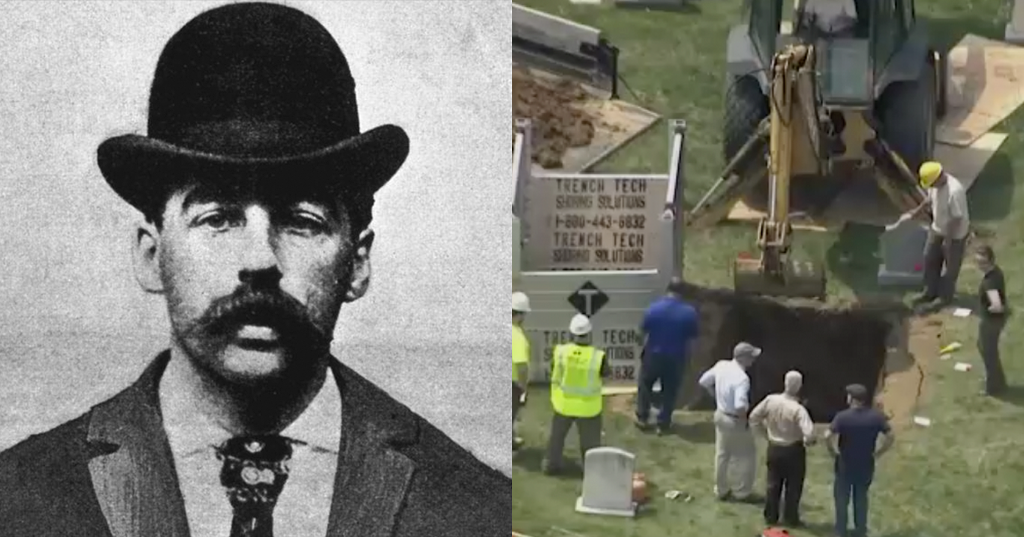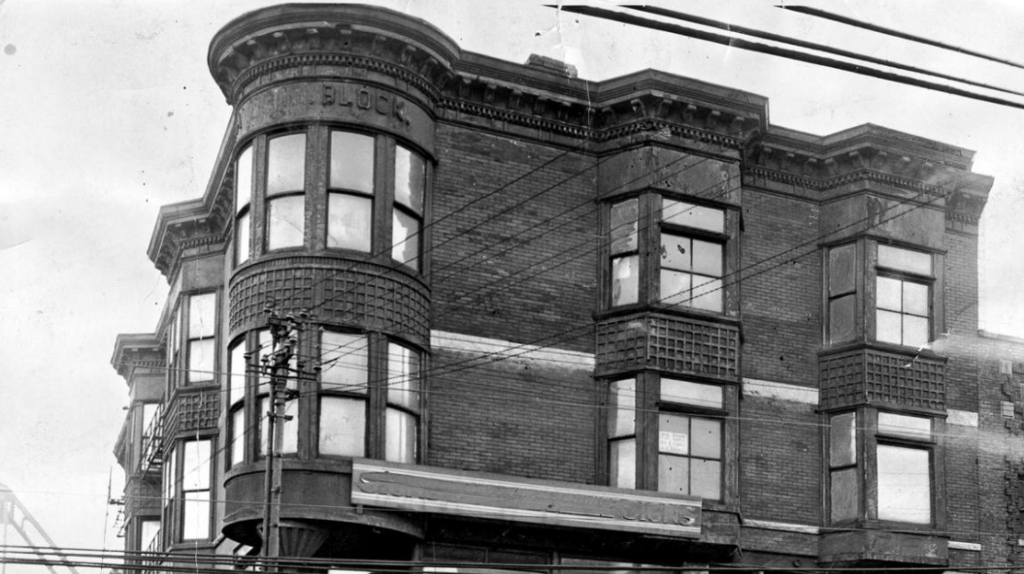H. H. Holmes’ Body Is Being Exhumed

Did the ‘Devil in the White City’ fake his own death?
Before DNA forensics, people got away with faking their own deaths all the time. Playing dead was a useful solution to countless problems — if you owed debts you couldn’t pay, for example. Or if you’d been charged with a crime you didn’t want to answer for.
It’s the second scenario that many people believe the serial killer H. H. Holmes pulled off in order to escape a death sentence in 1896. The theory that the “White Devil” — a Chicago “doctor” and businessman who notoriously killed between nine and 200 people (nobody’s quite sure) in the 1880s and 90s — somehow conned his way out of the gallows has been around for over 100 years.
Now, it’s getting put to the test.
Holmes’ body is currently being exhumed and tested for DNA. Digging began last week at his unmarked grave at Holy Cross Cemetery in Yeadon, Pennsylvania, according to NBC 10 Philadelphia. Holmes’ great-grandchildren, John and Richard Mudgett, successfully petitioned a court to dig up the dude’s body in order to see if it’s him — or someone else — buried there.
Holmes (whose real name is the rather less exotic-sounding Herman Webster Mudgett) is perhaps best known for constructing an elaborate death hotel — complete with gas chambers and chemical vats for boiling corpses — on Chicago’s South Side during the 1893 World’s Fair.
Erik Larson tells the story in his 2003 best seller “The Devil In The White City,” which is reportedly being made into a movie starring Leonardo DiCaprio.
Holmes was eventually convicted of murder and fraud in Philadelphia in 1896 after killing his partner as part of a life insurance fraud. He later admitted to killing two dozen other people, though local lore puts the real number closer to 200.
We may never know the exact number. What’s certain is that Holmes preyed on his fellow humans with a depravity that freaked America the fuck out.
“He has left behind him a wake of ruin and tears that not all the courts of America can wash away,” a Chicago Tribune reporter wrote in 1894, shortly after Holmes was arrested.
The mustachioed madman was sentenced to death in 1896, and the official narrative is that he was hung and buried in a Philadelphia cemetery that same year.
But there’s another version of events: that Holmes, who was an experienced swindler, somehow conned another prisoner into taking his place at the gallows while he escaped to freedom. He reportedly grew a big beard in the days leading up to his execution, perhaps as a way of disguising his identity. And he asked to be buried in 3,000 pounds of cement, the Chicago Tribune reported at the time.
“He cheated the gallows and is today alive and well growing coffee at San Parinarimbo, Paraguay, South America,” one witness told the Chicago Inter-Ocean, a long-defunct newspaper, in 1898.
Perhaps even more strangely, a newspaper account from 1896 that promoted the escape conspiracy quoted someone whom Holmes had confessed to killing years earlier.
Wait, what? Yes, this shit is deeply weird.
But is it true—or just an early example of fake news?

Apparently the 19th century tabloids — which kept the lights on for years by running lurid stories about Holmes and his “murder castle” in present-day Englewood — made hay with the theory that Holmes had escaped.
“This was quite a popular story at the time,” Matt Lake, a Philadelphia-based author and Holmes expert, tells NBC 5 Chicago. “A cynical person might say this was just designed to sell more newspapers, and it did sell newspapers!”
What’s more, 70 people witnessed Holmes’s hanging, a number of whom knew (and — surprise — disliked) the man, Chicago historian Adam Selzer told the Chicago Tribune.
Whoever’s buried in Holmes’ grave, we’ll find out soon enough. Anthropologists from the University of Pennsylvania will perform DNA analysis of the body.
Though the corpse has been there for 121 years, the shelf life of DNA is hundreds — even thousands — of years for corpses that are buried a few feet underground.
If your body is buried in cement, the chances of it containing usable DNA samples is likely to be even higher.
